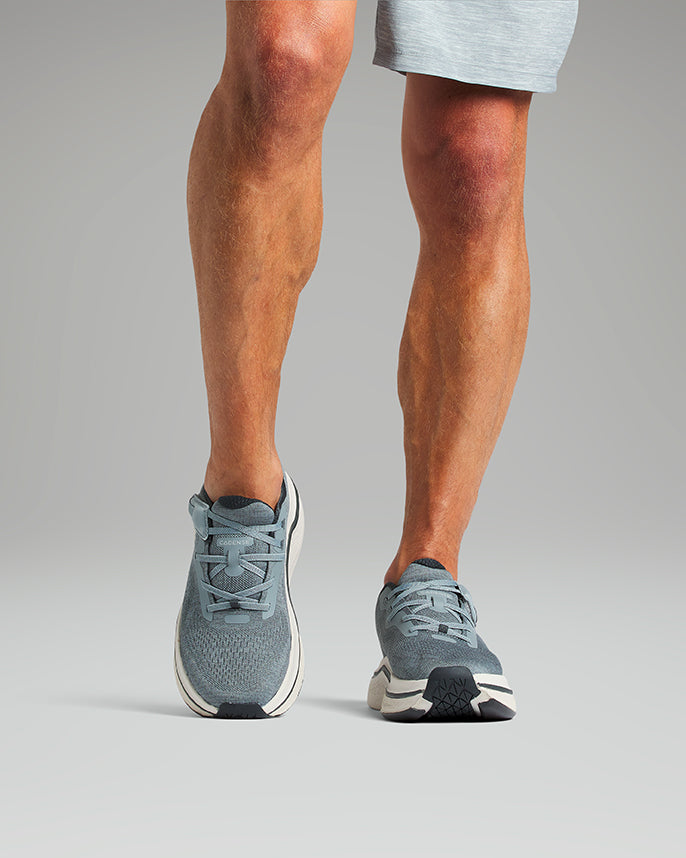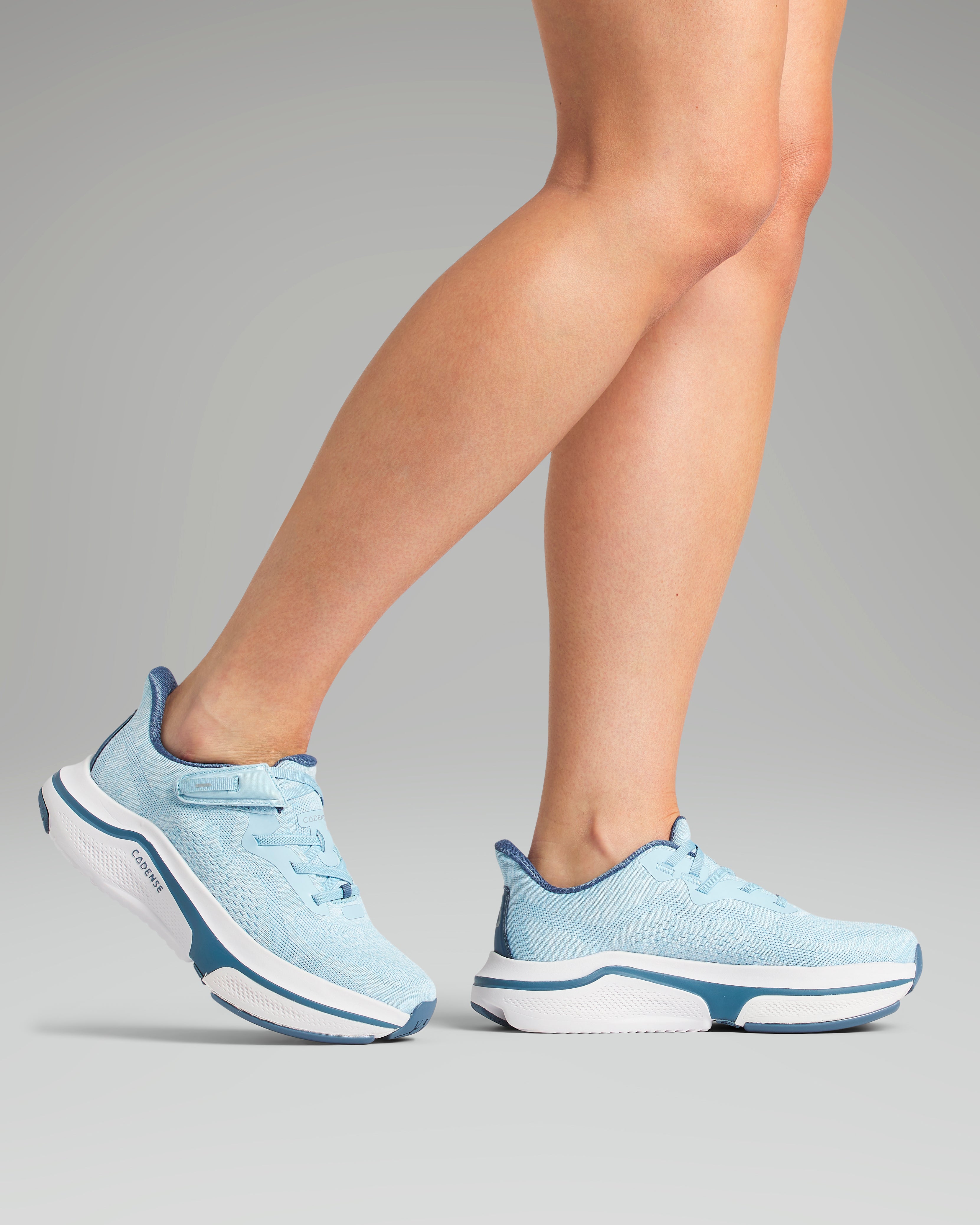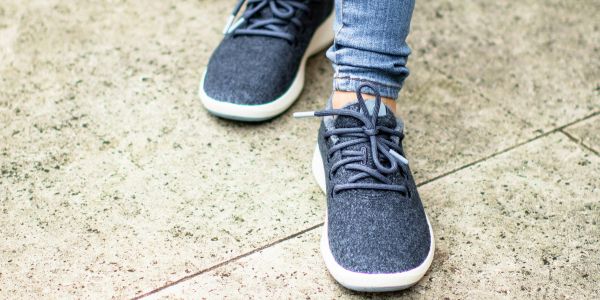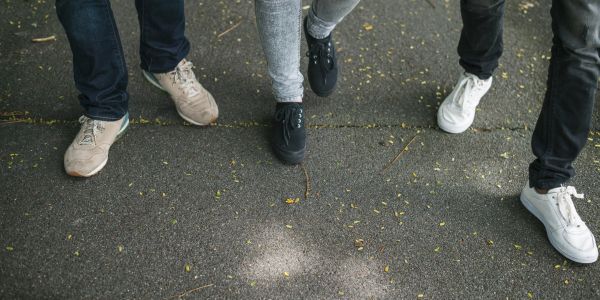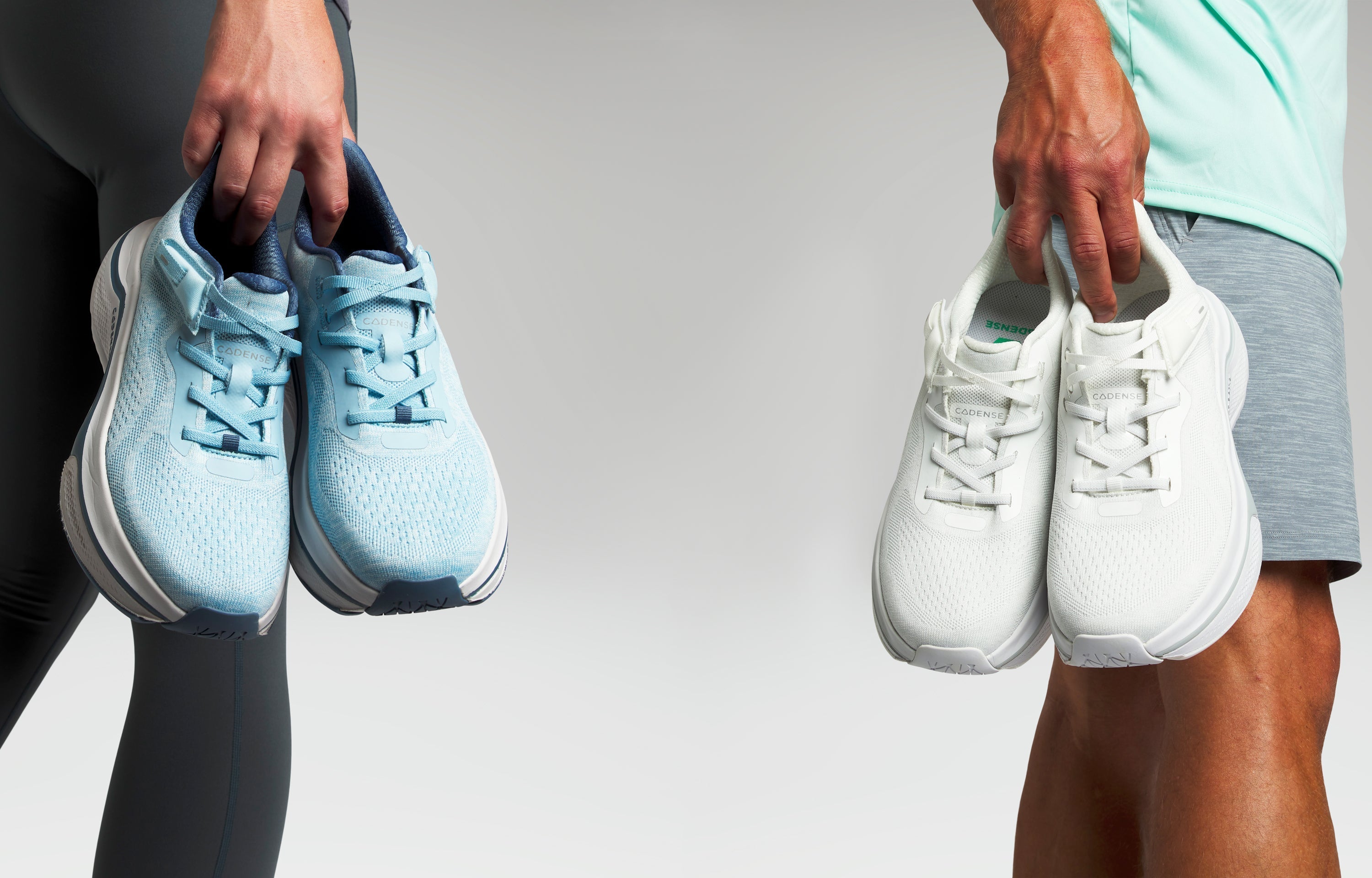
Cadense Adaptive Trainers s vs. Orthopedic Trainers vs. Regular Trainers: Which Are Best for Safer, Easier Walking?

If you—or someone you love—struggles to lift your foot fully when walking, everyday surfaces like carpet edges or sidewalk cracks can feel treacherous. Traditional choices usually fall into two camps: regular trainers for comfort or orthopedic trainers for support. Now there’s a third option — Cadense Adaptive Trainers, engineered to restore a smoother, safer gait through patented Variable Friction Technology.
Quick Comparison: Cadense Adaptive vs Orthopedic vs Regular Trainers
🌀 Cadense Adaptive Trainers
-
Purpose: Reduce tripping effort and smooth gait using Variable Friction Technology — glide when you step forward, grip when you land.
-
Key Tech: Two nylon pucks (low friction) + soft foam rocker + high-friction rubber zone; easy-entry Velcro closure.
-
Who Benefits: Foot drop, MS, Parkinson’s, CP, stroke recovery, neuropathy, or anyone who drags or scuffs toes.
-
Surface Performance: Ideal for low-pile carpet, hardwood, tile, sidewalks, and pavement (not for ice, snow, gravel, or grass).
-
Fit & AFO Compatibility: Works with many AFOs; available in standard and wide sizes; removable insole.
-
Weight: ~306.2 g (Women’s 6.5) / ~368.5 g (Men’s 8.5).
-
Heel-to-Toe Drop: Standard 3/8".
-
Sole Height: ~1.5" (for glide-and-grip function + added comfort).
-
Pros: Smooth swing phase, controlled stop/toe-off, easy on/off, looks like a modern, stylish trainer.
-
Cons: Not ideal for rough concrete or outdoor terrain; scuffing may occur.
- Price: £199.99
🩺 Orthopedic Trainers
-
Purpose: Cushioning, stability, and pressure relief for medical foot and ankle conditions.
-
Key Tech: Extra depth/width, stiffeners, rocker soles, motion-control midsoles, removable insoles.
-
Who Benefits: Hallux rigidus, plantar fasciitis, diabetic foot risk, severe overpronation, post-op recovery.
-
Surface Performance: Varies; often prioritizes stability and forefoot off-loading.
-
Fit & AFO Compatibility: Usually AFO-friendly due to depth and removable footbeds.
-
Weight: Often heavier due to structural reinforcements.
-
Pros: Proven off-loading and stability; some insurance coverage available.
-
Cons: Can be bulky, less stylish; rocker soles may affect balance.
- Typical Price: £120–£300+ (custom devices cost more).
👟 Regular Trainers
-
Purpose: Lifestyle, sport, or casual comfort/performance.
-
Key Tech: EVA/TPU foam midsoles; rubber outsoles; some with knit uppers or gel cushioning.
-
Who Benefits: General population, athletes, or light support needs.
-
Surface Performance: Varies widely; many not optimized for slip resistance or toe clearance.
-
Fit & AFO Compatibility: Mixed; most not designed for braces.
-
Weight: Light to moderate.
-
Pros: Lightweight, stylish, breathable, wide variety of brands and price points.
-
Cons: Limited slip resistance or stability features; fashion > function.
- Typical Price: £60–£250+.

Cadense Adaptive Trainers - Glide When You Need To and Grip When You Don’t
Cadense’s patented sole features two raised nylon pucks that reduce friction as you swing your foot forward, helping you glide over minor obstacles. When you press down, the pucks retract into soft foam and reveal a high-friction rubber zone for a secure stop and toe-off. This smooth transition helps users with foot drop, Parkinson's Disease, Multiple Sclerosis (MS), Cerebral Palsy (CP), neuropathy, Morton's Neuroma, or stroke recovery walk more naturally.
Cadense trainers are lightweight (306–368 g), AFO-friendly, and have a wide toe box with easy one-hand Velcro entry. They’re ideal for low-pile carpet, hardwood, tile, pavement, and sidewalks, though users should avoid ice or snow since the sole’s variable friction takes a little time to get used to.
Orthopedic Trainers – Support and Off-Loading
Orthopedic trainers are built for stability, motion control, and pain relief. They typically feature rocker soles, reinforced heel counters, and removable footbeds for orthotic inserts. Research shows that rocker-sole trainers can reduce pain for big-toe arthritis and other forefoot issues [1]. However, some designs may slightly affect balance for certain wearers [2].
Best for: hallux rigidus, plantar fasciitis, diabetic neuropathy, or post-surgical recovery.
Regular Trainers – Comfort Without Adaptivity
Modern trainers focus on style, cushioning, and breathability—but they’re rarely designed for people with gait challenges or braces. A 2024 review emphasized that secure fastening, slip resistance, and proper sole stiffness are key to preventing falls [3]. Most everyday trainers fall short on those features.

The Evidence Behind Safer Walking
- Structured, supportive trainers can lower fall risk compared with walking barefoot or in socks [4].
- Proper footwear design—fit, closure, slip resistance, and sole geometry—directly influences stability [3].
- Cadense’s adaptive sole concept originated from MIT's Skywalker research [5], which analyzed gait mechanics and led to early pilot tests showing improved walking speed and biomechanics [6].
Final Thoughts
Each trainer serves a different purpose:
-
Cadense Adaptive Trainers: Smooth glide-then-grip for reduced tripping and improved confidence.
-
Orthopedic Trainers: Targeted support and off-loading under clinical guidance.
-
Regular Trainers: General comfort and versatility, but limited for mobility impairments.
As adaptive technology advances, the line between medical necessity and modern design continues to blur—proof that function and fashion can finally walk hand in hand.
References
- Menz HB et al. Foot Orthoses vs. Rocker-Sole Footwear for First MTP OA, 2016.
- Bunya M et al. Effect of Toe-Only Rocker Shoes on Balance in Older Adults, 2024.
- Kim IJ et al. Enhancing Footwear Safety for Fall Prevention in Older Adults, 2024.
- Karger GeroScience. Footwear and Falls in Long-Term Residential Aged Care, 2024.
- Susko TG et al. MIT-Skywalker: A Novel Gait Neurorehabilitation Robot, 2016.
- Evora A et al. Pilot Study of Cadense, a Novel Shoe for Patients with Foot Drop, 2019.

